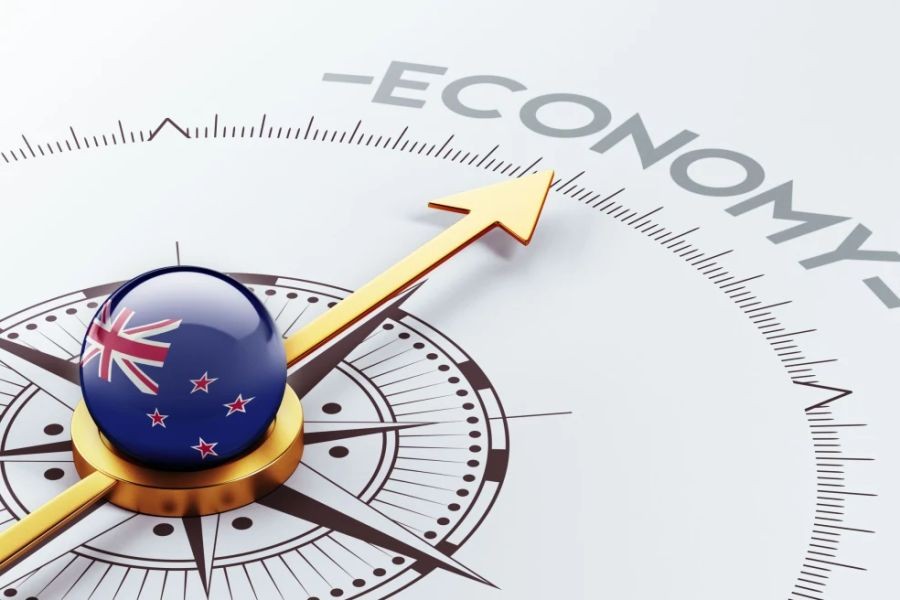In the Southern Hemisphere, New Zealand and Australia often find themselves compared in terms of economic policies, given their geographical proximity and shared history. However, their economic landscapes display distinct characteristics, shaped by unique cultural, political, and industrial factors. This article delves into how New Zealand's economic policies stack up against those of Australia, examining key differences, similarities, and the implications for Kiwi businesses and consumers.
The Economic Landscape: New Zealand vs. Australia
New Zealand's economy is often highlighted for its strong agricultural sector, innovative technology industry, and a commitment to sustainability. According to Stats NZ, the primary industries contributed approximately 7% to New Zealand's GDP in 2022, with dairy being a significant component. In contrast, Australia boasts a more diversified economy, heavily reliant on mining and resources, which accounted for about 10% of its GDP in 2023 (source: Australian Bureau of Statistics).
Fiscal Policies and Economic Growth
Both countries have adopted fiscal policies aimed at fostering economic growth, yet their approaches differ. New Zealand has been lauded for its prudent fiscal management and relatively low public debt levels, which stood at 33% of GDP in 2023 (source: Reserve Bank of New Zealand). This conservative fiscal strategy has allowed New Zealand to maintain a stable economic environment, albeit with slower growth rates compared to Australia.
Australia's approach involves more aggressive fiscal stimulus, with a focus on infrastructure investment and tax incentives to drive economic activity. This strategy has contributed to Australia's robust growth, although it comes with higher public debt, which reached 45% of GDP in 2023 (source: Australian Treasury).
Monetary Policies: Interest Rates and Inflation
Monetary policy is another area where New Zealand and Australia diverge. The Reserve Bank of New Zealand (RBNZ) has maintained a cautious stance on interest rates, focusing on controlling inflation, which was at 2.5% in 2023. This approach has helped stabilize prices but has kept interest rates relatively high, impacting borrowing costs for consumers and businesses.
Conversely, the Reserve Bank of Australia (RBA) has adopted a more accommodative monetary policy, keeping interest rates lower to spur borrowing and investment. This has supported economic expansion but has also led to higher inflation rates, with consumer prices rising by 4% in 2023.
Trade Policies and International Relations
Trade is a crucial component of both nations’ economies, yet their trade policies reflect differing priorities. New Zealand's trade policy emphasizes export diversification and sustainability, with significant trade relationships with China, the US, and the European Union. The country's exports to China alone accounted for 29% of total exports in 2022 (source: MBIE).
Australia, while also trading heavily with China, focuses more on strengthening ties with regional partners through agreements like the Comprehensive and Progressive Agreement for Trans-Pacific Partnership (CPTPP). This has helped Australia secure a broader trade network, although its heavy reliance on China poses risks amidst geopolitical tensions.
Comparative Analysis: Pros and Cons
New Zealand
- Pros:
- Stable economic environment with low public debt.
- Strong focus on sustainability and innovation.
- Growing technology sector attracting global interest.
- Cons:
- Higher interest rates affecting borrowing costs.
- Limited natural resources compared to Australia.
- Dependency on a few key export markets.
Australia
- Pros:
- Diversified economy with strong mining and resources sector.
- Lower interest rates encouraging investment.
- Extensive trade agreements providing market access.
- Cons:
- Higher public debt due to aggressive fiscal policies.
- Inflationary pressures from lower interest rates.
- Geopolitical risks due to reliance on China.
Real-World Case Studies
To illustrate the practical implications of these policies, let's explore some real-world case studies.
Case Study: NZTech – Navigating New Zealand’s Innovation Landscape
Problem: NZTech, a leading technology advocacy group in New Zealand, faced challenges in promoting innovation amid high borrowing costs and limited funding availability.
Action: To address this, NZTech collaborated with government agencies to establish innovation hubs and seek international partnerships, leveraging New Zealand’s reputation for sustainability.
Result: Over three years, NZTech facilitated the creation of over 200 startups, contributing to a 25% increase in the tech sector's GDP contribution.
Takeaway: This case underscores the importance of strategic partnerships and government support in fostering innovation within constrained fiscal environments.
Case Study: BHP – Australia’s Resource-Driven Growth
Problem: BHP, one of the world's largest mining companies, faced declining demand for its coal products due to global sustainability trends.
Action: BHP diversified its portfolio by increasing investments in renewable energy and critical minerals, aligning with Australia’s trade policies.
Result: Within five years, BHP reported a 30% increase in revenue from renewable sectors, mitigating risks from declining coal demand.
Takeaway: This demonstrates the effectiveness of adapting to global trends and diversifying within a resource-dependent economy.
Debunking Myths: Common Misconceptions About Economic Policies
- Myth: "A strong currency always benefits the economy."
- Reality: A strong currency can hurt exports by making them more expensive internationally, impacting trade balances negatively.
- Myth: "Lower taxes automatically lead to higher economic growth."
- Reality: While lower taxes can stimulate growth, they can also increase debt if not balanced with spending cuts.
- Myth: "High inflation is inherently bad."
- Reality: Moderate inflation can encourage spending and investment, driving economic activity.
Which of these myths did you believe before reading this? Drop your thoughts below!
Conclusion: Navigating the Future of Economic Policies
As New Zealand and Australia navigate their economic futures, understanding their distinct policy approaches can offer valuable insights for businesses and policymakers. New Zealand’s focus on sustainability and fiscal prudence provides stability, while Australia's diverse economy and aggressive growth strategies offer dynamic opportunities. For Kiwi businesses, aligning with global trends and leveraging local strengths will be key to thriving in this evolving landscape.
Ready to dive deeper into economic strategies? Join our exclusive NZ Economic Insights Newsletter to stay informed about upcoming policy changes and market trends!
Related Search Queries
- New Zealand vs Australia economy
- Economic policies comparison
- Trade policies in New Zealand
- Monetary policy differences
- Fiscal strategies Australia
- Impact of inflation on economy
- New Zealand's tech industry growth
- Australia's mining sector
People Also Ask (FAQ)
- How does New Zealand's economic policy impact businesses?
New Zealand's focus on sustainability and low public debt creates a stable environment, benefiting businesses with long-term planning and innovation.
- What are the biggest misconceptions about economic policies?
Many believe lower taxes automatically boost growth, but without balanced spending cuts, they can increase national debt.
- Who benefits the most from Australia's economic policies?
Australia's policies benefit the mining sector, technology companies, and businesses engaged in trade with regional partners.





























